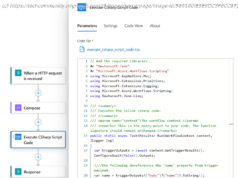At a more detailed intra-industry level, there’s also been a great deal of scrutiny applied to the competitive landscape. In particular, there’s been a lot of focus…
At a more detailed intra-industry level, there’s also been a great deal of scrutiny applied to the competitive landscape. In particular, there’s been a lot of focus recently on the ongoing challenges that long-time industry leader Intel has been facing in manufacturing and other areas. Toss in the recent announcement of former Intel leader Pat Gelsinger coming back to the chip giant as CEO, and it seems the stage was nearly perfectly set for some blockbuster news on how the Gelsinger-led Intel could reinvigorate itself. Based on today’s announcements, the semiconductor stalwart did not disappoint. In a significant strategic shift, Intel announced a series of major manufacturing related news that not only clarified any uncertainties about whether or not the company intended to keep building its own chips, but doubled down on its desire to increase its manufacturing capacity with a $20 billion investment to build two new state-of-the-art fabs focused on EUV-based (extreme ultraviolet) process technologies at 7nm and below in Arizona. At the same time, Intel displayed a new willingness to work with other chip foundries on some of the company’s own chip designs. Finally, completing the trifecta, the company also unveiled plans to open up both its current and planned manufacturing capacity to other chipmakers through the launch of Intel Foundry Services. Intel’s newest factory, Fab 42, became fully operational in 2020 on the company’s Ocotillo campus in Chandler, Arizona. Fab 42 produces microprocessors using the company’s 10nm manufacturing processes. The strategy represents a bold new vision and surprisingly aggressive approach that is intended not only to help the company catch up to other major chip suppliers from a process perspective (e.g., reaching 7nm,5nm and below), but also to work with them as needed for some of its own products until it reaches those goals, while starting to position itself as a competitive manufacturing partner to a much wider range of semiconductor companies. «Intel designed and built its own chips—period. In fact, the company was the poster child example of an integrated device manufacturer, or IDM. With IDM 2.0, Intel is planning a significantly more open and comprehensive approach to chip manufacturing…» For long-time Intel followers, this is an enormous change on many different levels.
Домой
United States
USA — software Intel CEO Pat Gelsinger doubles down on manufacturing, opens up foundry, shifts...






